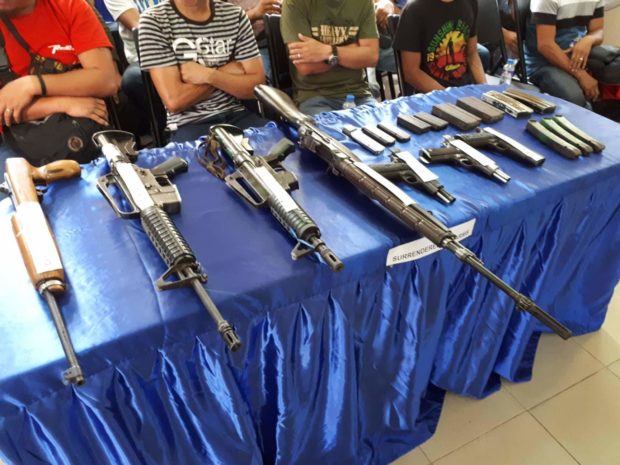
Clashes between Philippine Army and pro-Islamic State Bangsamoro Islamic Freedom Fighters (BIFF) in Liguasan Marsh, Maguindanao, have killed at least 28 militants. (Photo: 6th Infantry division, Philippine Army)
KUALA LUMPUR: A Singaporean and five Indonesians are believed to be fighting with the pro-Islamic State Bangsamoro Islamic Freedom Fighters (BIFF) in the southern Philippines where the army has launched air and ground assaults to pre-empt bombings ahead of Eid Fitr celebrations.
The military operations, launched on Sunday (Jun 10), has killed 26 BIFF militants, according to the Philippine army, revising down the initial figure of 28 fatalities. Another soldier and one civilian were also killed.
“We are currently checking to see whether the five Indonesians and one Singaporean are among those militants who were killed,” Lieutenant-Colonel Gerry Besana, spokesman for Western Mindanao Command, told Channel NewsAsia.
“The foreign fighters are members of the Daulah Islamiyah Mindanao but they are fighting alongside BIFF and are believed to be in the area where current military operations are ongoing,” said Besana.
On Tuesday, the army said information on the ground revealed that BIFF was planning to launch large-scale bombings in several cities in Mindanao before the onset of Eid Fitr celebrations.
The Singaporean and Indonesian foreign fighters are believed to have entered Mindanao island last year to take part in the siege of Marawi city, according to the military.
“We don’t know the exact date they (foreign fighters) entered Mindanao but it was during the time of the fighting in Marawi city,” said Besana.
“We believe they entered Mindanao via coastal areas like General Santos City to make their way to Marawi city. But due to military operations, they were contained in the Liguasan Marsh up until today," said Besana.
The vast Liguasan Marsh straddles three provinces - Maguindanao, North Cotabato and Sultan Kudarat - on Mindanao island.
Pro-IS militants led by the Maute Group and a faction of the notorious Abu Sayyaf Group laid siege to Marawi City from May 23, 2017, before the government regained control in October 2017.
The Marawi siege killed more than 1,200 and was the fiercest fighting the Philippine government had faced in many years, flattening buildings and displacing 200,000 people.
The siege also drew fighters from Malaysia, Indonesia and Singapore, according to the Philippine army.
In July last year, the body of a fighter believed to be Singaporean was found in Marawi, the Philippines armed force said.
Singapore’s Ministry of Home Affairs (MHA) also said in May that Muhamad Ali Abdul Rahiman @ Muawiya, has been in the southern Philippines since the 1990s.
MHA said there was no information about whether he was involved in the armed insurgency in Marawi City.
https://www.channelnewsasia.com/news/asia/singaporean-believed-to-be-fighting-with-militants-in-mindanao-10428704












